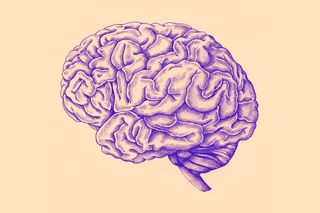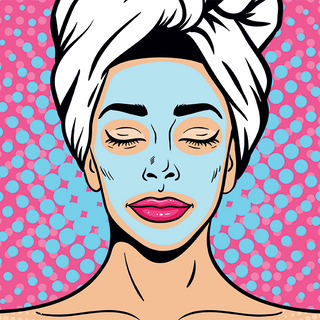
Why Alzheimer’s Is a Woman’s Disease
From longer life spans, to less sleep, to more stress, the risk factors are uniquely female.

By 2050, the number of people with Alzheimer’s disease in India is expected to triple from what it is now; most new cases will be among the generation reading this article now; most patients will be women.
Science has known for a long time that Alzheimer’s disease — a type of dementia characterized by problems with memory, cognition and behavior — affects more women than men. It also seems to affect women more rapidly; women’s mental skills tend to deteriorate more quickly at the same stage of diagnosis as men.
For nearly as long a time, this was attributed to women’s comparative longevity; the older you are, the more likely you are to develop Alzheimer’s — and women outlive men by an average of 4.3 years globally. But as research into women’s unique physiology and experiences (both areas historically disregarded by medicine) slowly grows, evidence is telling us it’s not so simple.
“Even when you exclude [longevity], women are two to three times more likely to develop Alzheimer’s than men,” said Dr. Marie Pasinski, a faculty member at Harvard Medical School and neurologist at Massachusetts General’s Institute for Brain Health, in an interview last year.
In addition to accruing increasing risk from a single factor, women also face more risk factors for Alzheimer’s than men. And many are the physiological effects of societal inequality.
*
‘Get more sleep’ is simplistic advice, regardless of who is giving it and what they think it will solve. But insufficient sleep is a major risk factor for Alzheimer’s, and research shows that women get less, and less quality, sleep than men over the course of a lifetime, for reasons both physiological and social. It starts early — in the interview, Pasinski pointed to period discomfort in adolescence, which can keep girls up at night. Later in life, pregnancy is known to disrupt sleeping patterns.
Breastfeeding, of course, keeps women up at night, but the sleep deficit continues even as children grow more self-sufficient. A new study of first-time parents’ sleep patterns recently concluded that across the first six years of a child’s life, fathers face “a third or less of the [sleep] effect sizes seen in mothers. This may be associated with the observation that mothers, including working women, still have more household and child rearing responsibilities and spend more time on these tasks compared with fathers….” Similar research has determined each additional child increases women’s chances of not getting enough sleep by 50 percent, but found little-to-no effect on men’s sleep.
Population-wide sleep statistics are difficult to come by in India, beyond the ‘no one is getting enough’ narrative. But a survey of 786 Mumbai women last year by SNDT Women’s University suggests 83.1 percent of urban women are not able to get the recommended 7 to 8 hours a day.
Related on The Swaddle:
Study Says New Moms Get Less Sleep Than New Dads
Sleep deficits, even minor ones, kick off changes in the brain. A 2017 research collaboration by the Washington University School of Medicine in St. Louis and Stanford University in the U.S, with Radboud University Medical Centre in the Netherlands, determined that one night of bad sleep increases levels of amyloid beta, a protein, in the brain, and one week of poor sleep can increase tau, another protein; the accumulation of both of these brain proteins are hallmarks of Alzheimer’s disease.
“We think that perhaps chronic poor sleep during middle age may increase the risk of Alzheimer’s later in life,” the study’s senior author said at the time.
Middle age for women brings menopause, which has been known to disrupt sleep patterns. But the phase’s relationship to Alzheimer’s may go deeper. A nascent body of research suggests hormones, estrogen in particular, play a major role in women’s neural health. Some experts, still considered fringe by the medical establishment, are linking menopause’s dip in estrogen levels to middle-aged onset of psychiatric disorders among women otherwise not at risk for them. At the same time, a large-scale study published this month by researchers in Finland found post-menopausal women who underwent oral hormone therapy were 9 to 17 percent more likely to develop Alzheimer’s disease than women who did not. (Vaginal hormone therapy among the same demographic showed no such elevated risk, however.)
Unfortunately, not enough studies have been devoted to studying how natural and therapeutic hormonal changes affect women’s health to enable confirmation of a link to either psychiatric or cognitive problems. “Previously, a lot of animal studies were done on male animals rather than females so that researchers didn’t have to deal with the estrous cycle and the hormonal changes,” Pasinski said in the interview. “We don’t know how important those factors are, but thankfully, we’re recognizing that now.”
Still, there’s little doubt of Alzheimer’s link to stress and mental health. And there’s plenty of evidence that women are more affected by these. Women are more likely to experience depression and anxiety, both conditions linked to Alzheimer’s disease. Worldwide, women are increasingly working outside the home, while still being responsible for all of the work inside it, leaving them chronically stressed. (Indian women more so than any others in the world.)
It’s well known that stress is bad for brain health, even if it’s impossible to measure exactly how much and in which ways. But risk factors aren’t called causes for a reason. Risk factors have potential, and while scientists can’t measure the precise effect of stress on the brain, they do know its potential: stress can undermine the body’s ability to regulate inflammation in a way that promotes disease. It can alter the activity or inactivity of a person’s genes — including, presumably, those linked to risk of Alzheimer’s disease.
Whatever the exact relationship between stress and Alzheimer’s disease, the fact that one exists creates a vicious cycle that affects women further: The stress of caregiving, especially caregiving for a dementia patient, is considered by some to be a risk factor for Alzheimer’s. “In India, the majority of the caregivers [for Alzheimer’s patients] are women in 70 percent of cases, and are mostly wives, daughters, and daughters-in-law,” points out a 2012 report on the state of Alzheimer’s in India, published by the Neurological Society of India.
Related on The Swaddle:
ILO Report Clarifies the Gendered Burden of Unpaid Carework Around the World
What often gets lost in the stressful overload is something Pasinski called “one of the very best things we can do for our brain”: exercise. Just as often, physical activity is simply not allowed to women. “I think about my mother who had Alzheimer’s disease and her generation didn’t do any type of physical activity or exercise,” she said in the interview. It’s a mindset still prevalent in India, where a 2012 study of diabetes risk factors by the Indian Council of Medical Research determined “a large percentage of people in India are inactive with fewer than 10 percent engaging in recreational physical activity.”
“Males,” the study concluded, “were significantly more active than females.”
Still, the number one global risk factor for Alzheimer’s is social, not physical: less education and lack of cognitive stimulation, which disproportionately affect women worldwide. While India has made great strides in equalizing its gender gap in education, a gap nevertheless persists as families continue to prioritize schooling for boys over girls. Even when girls do get an equal education, “it is more difficult for women to acquire more mentally stimulating jobs because we start to raise children or have other responsibilities,” Pasinksi noted. Indian figures bear this out: women’s participation in the workforce is roughly mid-20 percent; some estimates put it as low as 10.7 percent.
*
Most medical and popular advice around preventing Alzheimer’s disease focuses on minimizing risk. But there’s no way to minimize female-ness in a society built to foster the male — male health, male careers, male research, male opinions. What is particularly enraging about women’s proneness to Alzheimer’s disease is how unnecessary it seems; while the physiological underpinnings of the disease aren’t fully parsed (and may well turn up a sex-specific factor once they are), the social factors that increase women’s risk — the responsibility of carework, which limits sleep and increases stress; the lack of education and mentally fulfilling careers; gendered norms that prevent exercise; the scientific distaste for women’s hormonal cycles — seem imminently solvable through basic equity.
But Alzheimer’s overwhelmingly affects older women’s minds — not a demographic that’s traditionally been valued, nor a loss that’s traditionally been missed. In the US, women older than 60 are twice as likely to develop Alzheimer’s than they are to develop breast cancer; but Alzheimer’s has no jaunty pair of pink balloons to capture the public’s sexual imagination and thus, collective action. As science toils forward, fighting its own biases, to find an explanation and cure for Alzheimer’s, the preventative efforts with the potential for the most impact are those made by society; insultingly, the lack of action feels like an almost willful forgetting.
Liesl Goecker is The Swaddle's managing editor.
Related


With Little Guidance, Adult Acne Sufferers Turn to Treatments That Make Skin Worse
